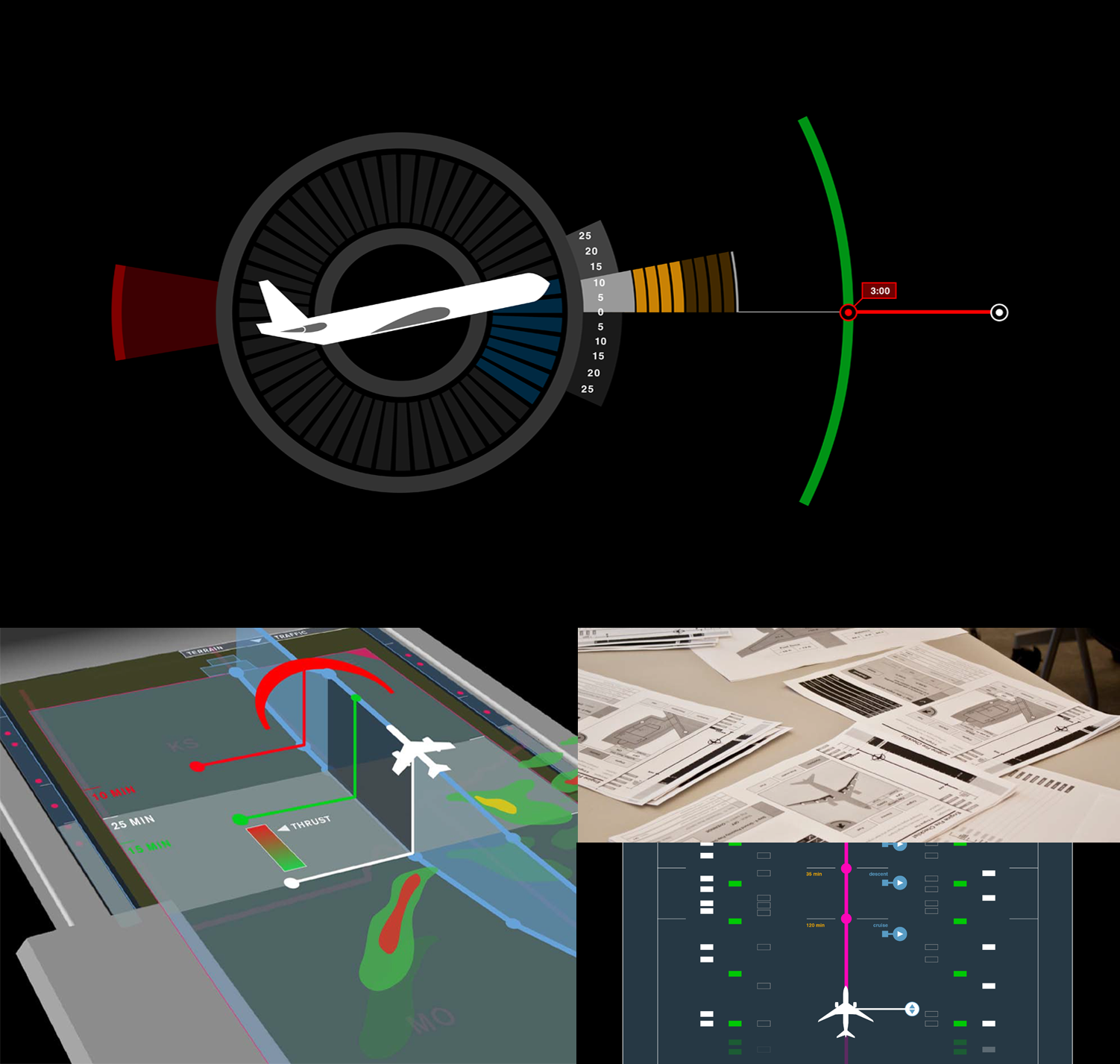Time, Target, and Speed
As an airplane moves through the air, kinetic, potential, and chemical energy are exchanged by the pilot in order to perform maneuvers. The energy state of the airplane describes how much of each kind of energy is available at a given time. The pilot does not directly control the energy. Instead, they manipulate the current direction and magnitude of the forces acting on the airplane, resulting in an increase or decrease in acceleration. During flight, this trade-off in energy must be balanced with a final desired energy state in mind in order to obtain optimal performance. A pilot flying the airplane needs to be able to plan ahead to make sure that the actions taken will result in a new energy state well situated for performing needed maneuvers.
The energy display interface combines nine data sets into a singular, dynamic visual representation. It gives pilots a means of understanding how the plane’s energy profile is changing at all times, putting them in a better position to know what options are available for current and future maneuvers, as well as increasing the rate of recovery from upset conditions.



